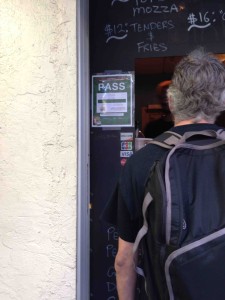Two quantitative risk assessment (RA) models were developed to describe the risk of salmonellosis and listeriosis linked to consumption of raw milk sold in vending machines in Italy.
 Exposure assessment considered the official microbiological records monitoring raw milk samples from vending machines performed by the regional veterinary authorities from 2008 to 2011, microbial growth during storage, destruction experiments, consumption frequency of raw milk, serving size, and consumption preference.
Exposure assessment considered the official microbiological records monitoring raw milk samples from vending machines performed by the regional veterinary authorities from 2008 to 2011, microbial growth during storage, destruction experiments, consumption frequency of raw milk, serving size, and consumption preference.
Two separate RA models were developed: one for the consumption of boiled milk and the other for the consumption of raw milk. The RA models predicted no human listeriosis cases per year either in the best or worst storage conditions and with or without boiling raw milk, whereas the annual estimated cases of salmonellosis depend on the dose-response relationships used in the model, the milk storage conditions, and consumer behavior in relation to boiling raw milk or not.
For example, the estimated salmonellosis cases ranged from no expected cases, assuming that the entire population boiled milk before consumption, to a maximum of 980,128 cases, assuming that the entire population drank raw milk without boiling, in the worst milk storage conditions, and with the lowest dose-response model.
The findings of this study clearly show how consumer behavior could affect the probability and number of salmonellosis cases and in general, the risk of illness. Hence, the proposed RA models emphasize yet again that boiling milk before drinking is a simple yet effective tool to protect consumers against the risk of illness inherent in the consumption of raw milk.
The models may also offer risk managers a useful tool to identify or implement appropriate measures to control the risk of acquiring foodborne pathogens. Quantification of the risks associated with raw milk consumption is necessary from a public health perspective.
Quantitative risk assessment of human salmonellosis and listeriosis related to the consumption of raw milk in Italy
Journal of Food Protection®, Number 1, January 2015, pp. 4-234, pp. 13-21(9)
Giacometti, Federica; Bonilauri, Paolo; Albonetti, Sabrina; Amatiste, Simonetta; Arrigoni, Norma; Bianchi, Manila; Bertasi, Barbara; Bilei, Stefano; Bolzoni, Giuseppe; Cascone, Giuseppe; Comin, Damiano; Daminelli, Paolo; Decastelli, Lucia; Merialdi, Giuseppe; Mioni, Renzo; Peli, Angelo; Petruzzelli, Annalisa; Tonucci, Franco; Bonerba, Elisabetta; Serraino, Andrea
http://www.ingentaconnect.com/content/iafp/jfp/2015/00000078/00000001/art00004
 According to the Orange County Health Care Agency, the results indicated the presence of a synthetic drug, which was used in making Rosca de Reyes bread at Cholula’s Bakery.
According to the Orange County Health Care Agency, the results indicated the presence of a synthetic drug, which was used in making Rosca de Reyes bread at Cholula’s Bakery.









